Discover Kyoto: A Journey Through History
Join our free walking tour to explore the rich tapestry of Kyoto's heritage, from ancient temples to serene parks, immersing in Japan's traditional culture and stunning landscapes.
Time
3 Hours
Stops
9 Places
Distance
5.8 km
Kiyomizu-dera
This iconic Buddhist temple is renowned for its wooden stage that juts out from the hillside, offering panoramic views of the city and surrounding cherry and maple trees.

Kiyomizu-dera (Source: Google Maps)
Kiyomizu-dera, meaning 'Clear Water Temple', is one of the most celebrated temples in Japan, founded in 778 AD. The temple is famous for its wooden stage that extends out over the hillside, providing breathtaking views of the cherry and maple trees that envelop it. The structure is an architectural marvel, built without the use of nails, showcasing the ingenuity of traditional Japanese construction methods. Kiyomizu-dera is also known for its Otowa Waterfall, where visitors can drink from three streams, each said to confer a different benefit: love, success, and longevity. The temple is a UNESCO World Heritage Site and is particularly popular during the cherry blossom season and the autumn foliage, attracting thousands of visitors each year.
Sannenzaka and Ninenzaka
These historic streets, lined with traditional wooden buildings, tea houses, and shops, offer a glimpse into Kyoto's past and are perfect for exploring Japanese traditional culture.

Sannenzaka and Ninenzaka (Source: Google Maps)
Sannenzaka and Ninenzaka are two historic streets that descend from Kiyomizu-dera, lined with traditional wooden machiya houses, tea shops, and souvenir stores. These charming streets provide a glimpse into Kyoto's past, with their cobblestone pathways and preserved architecture. The names of the streets, which mean 'three years slope' and 'two years slope', are said to be derived from the belief that living near these slopes could extend one's life. Walking down these lanes, visitors can experience the essence of Japanese traditional culture, from the art of kimono-wearing to the tea ceremony. The area is also known for its seasonal festivals and events, making it a vibrant part of Kyoto's cultural landscape.
Yasaka Shrine
A vibrant shrine located in the Gion district, known for its beautiful lanterns and as the starting point of the famous Gion Matsuri festival.
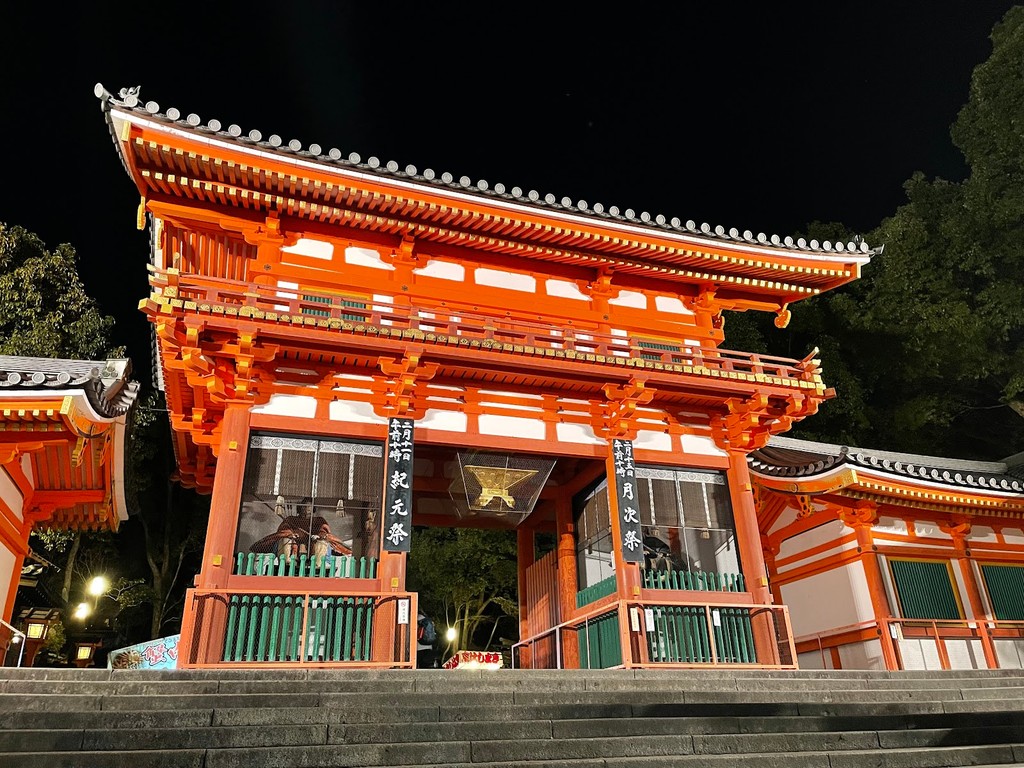
Yasaka Shrine (Source: Google Maps)
Yasaka Shrine, located in the Gion district, is one of Kyoto's most important Shinto shrines, founded over 1,300 years ago. The shrine is famous for its vibrant atmosphere, especially during the Gion Matsuri festival held in July, which features elaborate floats and traditional performances. The main hall, or Honden, is adorned with intricate carvings and is a fine example of Shinto architecture. Visitors can see the shrine’s iconic lanterns that illuminate the grounds, creating a magical ambiance at night. Yasaka Shrine is also a popular place for locals and tourists alike to pray for health and happiness, reflecting its deep-rooted significance in the community.
Maruyama Park
This scenic park is famous for its cherry blossoms in spring and offers a tranquil escape with its picturesque landscapes and traditional teahouses.
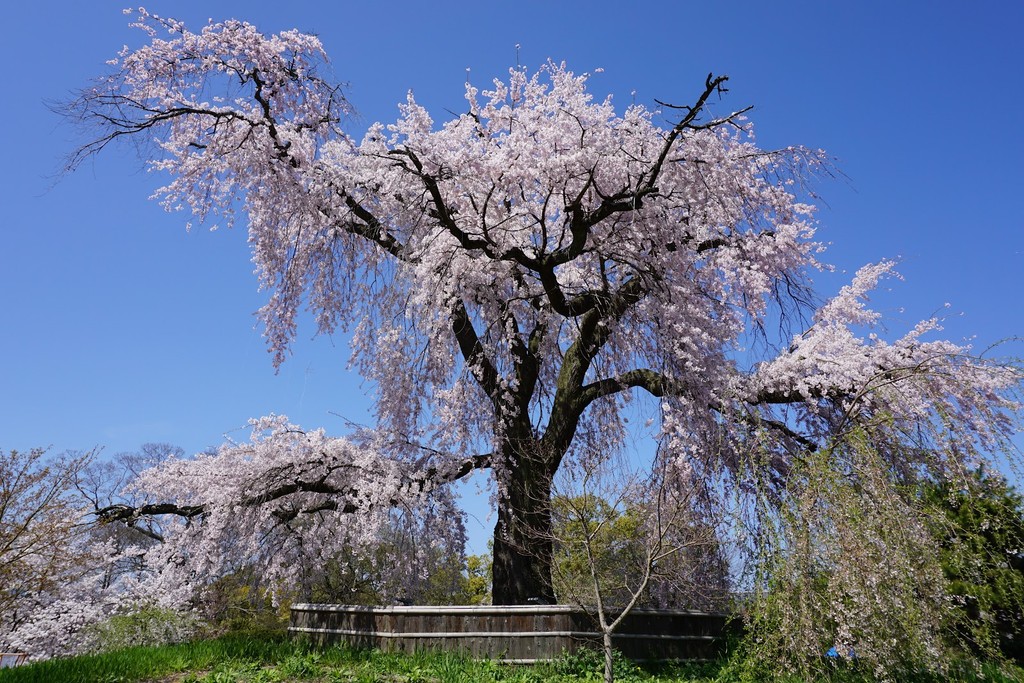
Maruyama Park (Source: Google Maps)
Maruyama Park is a beautiful public park in Kyoto, famous for its cherry blossoms in spring. Established in 1886, the park offers a tranquil escape with its picturesque landscapes, traditional teahouses, and serene ponds. The centerpiece of the park is the weeping cherry tree, which becomes a stunning spectacle during hanami (flower viewing) season. The park is a favorite spot for locals to relax, enjoy picnics, and participate in seasonal festivals. With its lush greenery and peaceful atmosphere, Maruyama Park is a perfect representation of the harmony between nature and culture in Kyoto.
Chion-in Temple
As the head temple of the Jodo sect of Japanese Buddhism, Chion-in is notable for its massive Sanmon gate and serene temple grounds.
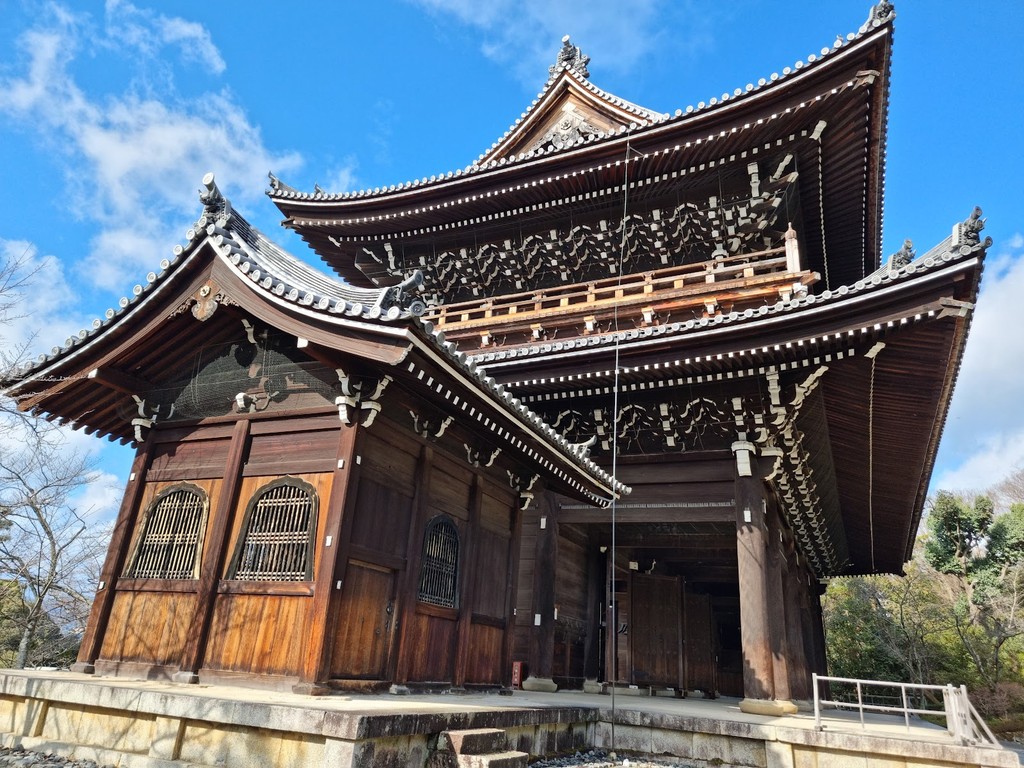
Chion-in Temple (Source: Google Maps)
Chion-in Temple is the head temple of the Jodo sect of Japanese Buddhism, founded in the 12th century. It is renowned for its massive Sanmon gate, which stands at 24 meters high and is one of the largest wooden gates in Japan. The temple complex is known for its serene atmosphere, beautiful gardens, and impressive architecture. The main hall, or Hondo, features a stunning wooden interior and is surrounded by tranquil grounds that invite contemplation and meditation. Chion-in is also famous for its bell, which is one of the largest in Japan and is rung 108 times on New Year's Eve to symbolize the purification of sins.
Shoren-in Temple
Known for its beautiful gardens and peaceful atmosphere, this temple offers a serene experience with its traditional architecture and art.
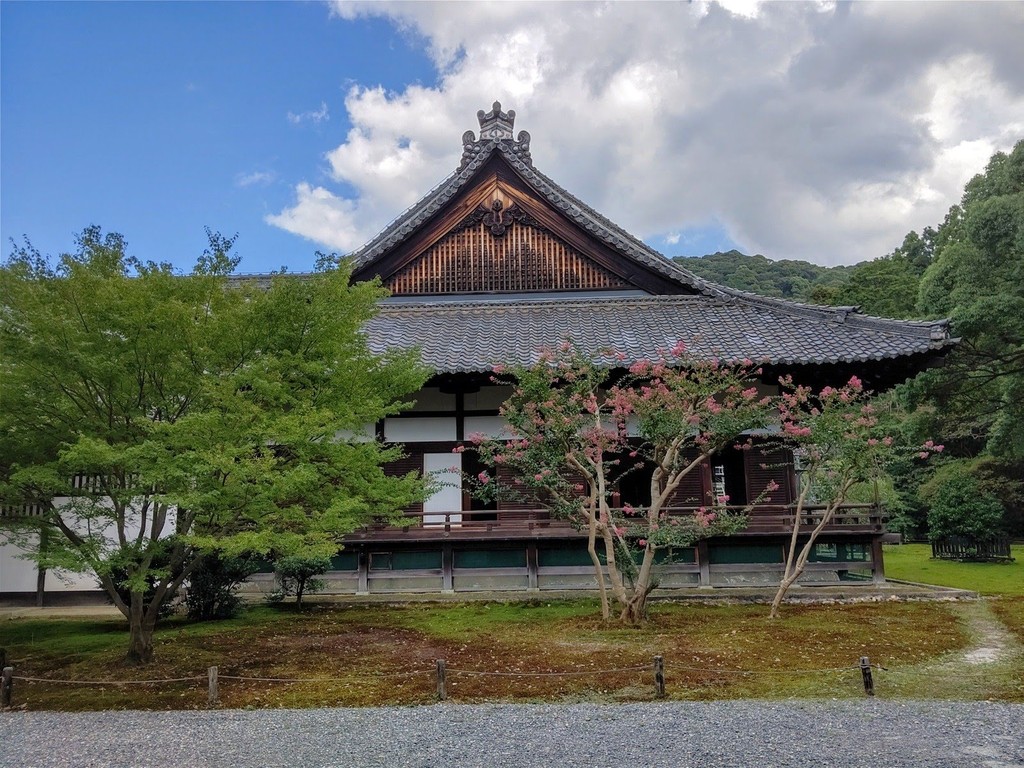
Shoren-in Temple (Source: Google Maps)
Shoren-in Temple, located near the Nanzen-ji district, is known for its exquisite gardens and tranquil setting. Founded in the 8th century, this temple offers a serene experience with its traditional architecture and beautiful landscapes. The temple is famous for its stunning sliding doors (fusuma), which feature intricate paintings and serve as a backdrop for meditation. Visitors can stroll through the meticulously maintained gardens, which are designed to reflect the natural beauty of the changing seasons. Shoren-in is a lesser-known gem in Kyoto, providing a peaceful retreat from the bustling city and an opportunity to appreciate the art of Japanese garden design.
Nanzen-ji Temple
A large temple complex that features impressive Zen gardens, historic buildings, and the unique brick aqueduct of Suirokaku.

Nanzen-ji Temple (Source: Google Maps)
Nanzen-ji Temple is a significant Zen Buddhist temple complex that dates back to the 13th century. It is renowned for its impressive architecture, including the iconic brick aqueduct of Suirokaku, which was built during the Meiji era. The temple grounds feature several sub-temples, each with its own unique gardens and structures that exemplify Zen aesthetics. The main hall, or Hondo, is a beautiful example of traditional Japanese temple architecture, adorned with stunning paintings and artifacts. Visitors can explore the serene Zen gardens, which are designed to promote meditation and reflection, making Nanzen-ji a key site for understanding the principles of Zen Buddhism.
Philosopher’s Path
This scenic walkway, lined with cherry trees and quaint shops, follows a canal and offers a peaceful stroll through one of Kyoto's most charming areas.
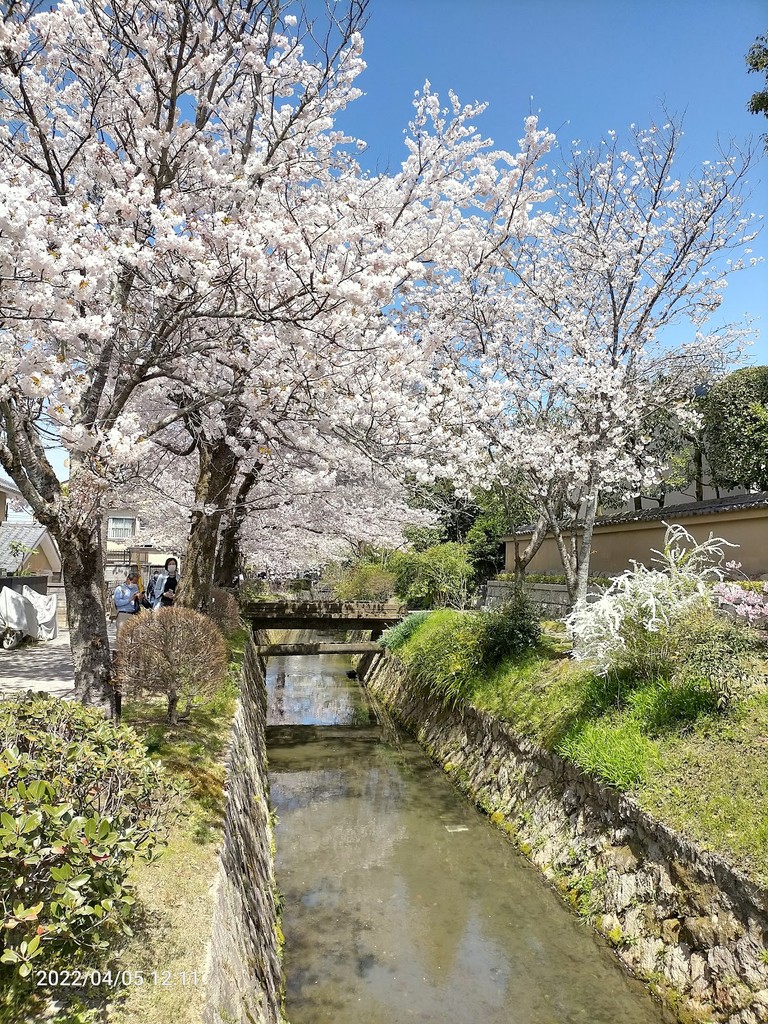
Philosopher’s Path (Source: Google Maps)
The Philosopher’s Path is a scenic walkway that follows a cherry-tree-lined canal, offering a peaceful stroll through one of Kyoto’s most charming areas. Named after the philosopher Nishida Kitaro, who used to walk this route for contemplation, the path is particularly stunning during cherry blossom season. Along the way, visitors can find quaint shops, cafes, and art galleries, making it a perfect blend of nature and culture. The path is also home to several important temples and shrines, providing opportunities for exploration and reflection. Walking along the Philosopher’s Path allows visitors to experience the beauty of Kyoto’s landscapes while immersing themselves in its rich intellectual and spiritual heritage.
Ginkaku-ji (Silver Pavilion)
Despite its name, the Silver Pavilion is a stunning example of Zen architecture and gardens, offering insights into Japan's aesthetic philosophy.
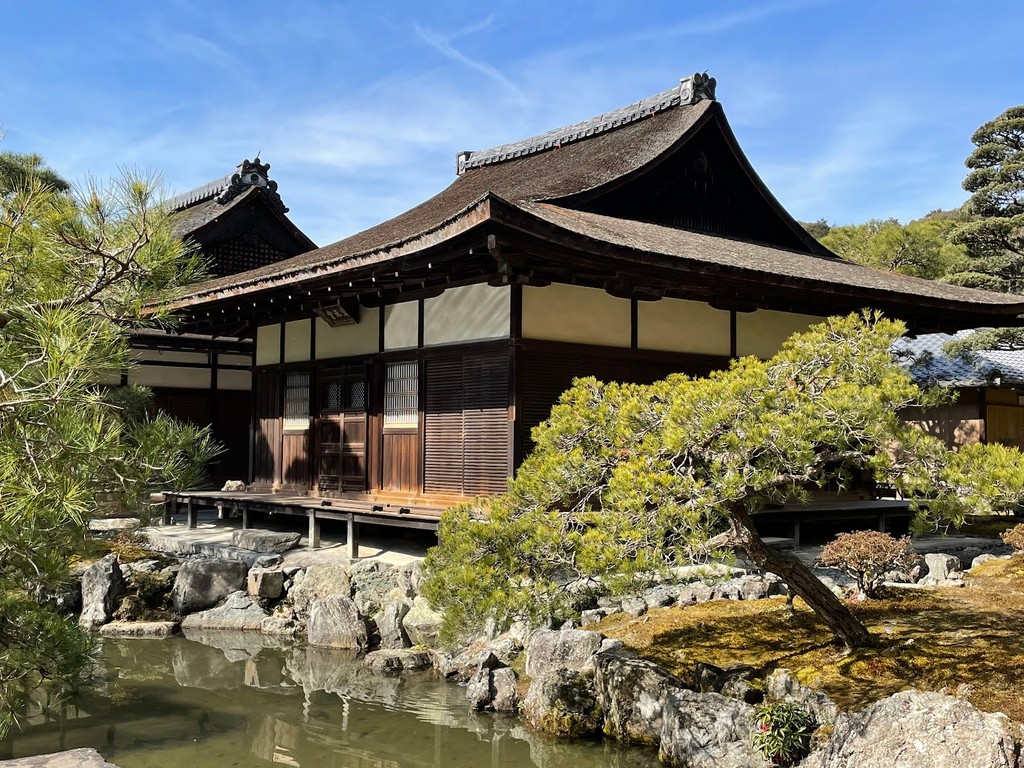
Ginkaku-ji (Silver Pavilion) (Source: Google Maps)
Ginkaku-ji, or the Silver Pavilion, is a stunning Zen temple constructed in the late 15th century. Despite its name, it was never covered in silver; instead, it represents the beauty of simplicity in Zen architecture. The temple is surrounded by meticulously landscaped gardens that embody the principles of Zen philosophy, emphasizing harmony with nature. The main hall features a beautiful thatched roof and exquisite interior designs. Ginkaku-ji is also famous for its sand garden, known as the 'Sea of Silver Sand,' which is carefully raked to create mesmerizing patterns. This site offers insights into Japan's aesthetic philosophy and serves as a tranquil space for reflection and appreciation of nature.

Your travels, your rules.
Create your own Free Walking Tours.
Set your preferences, distances and anything you want to do or see.
Completely free, no payment required.